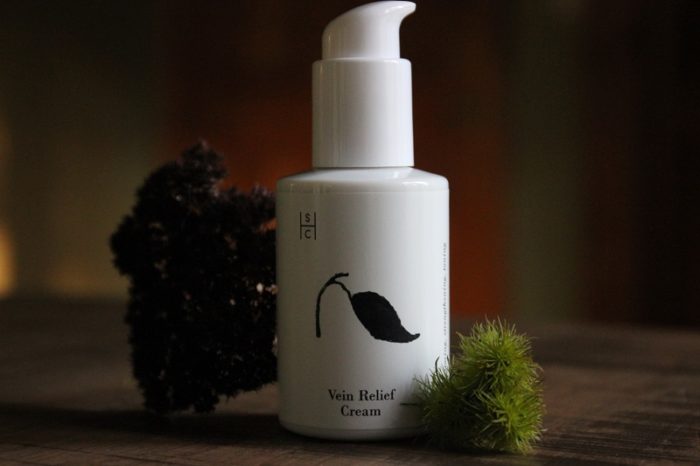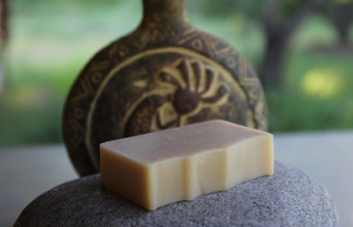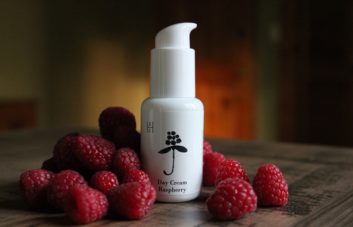D. Klokov
University of Ottawa
Introduction
In the late 1920s, a French nun, sister Maria-Suzanne, was on a mission on Fiji islands. She took note of a local traditional remedy that was being used to cure various skin conditions. Sister Maria-Suzanne started applying it on the skin of progeria patients to help them cope with the pain. The effect was so strong that the case caught the attention of French medical scientists [1]. This is how the scientific world found about the miracle of the Polynesian and South-East Asian traditional medicine – Tamanu oil.
Later on, the focus in studying the beneficial actions of Tamanu oil shifted toward its phenomenal healing properties. A 1951 PhD thesis by J. Chevalier was fully dedicated to the healing potential of Tamanu oil [2].
Tamanu oil is extracted from the seeds (nuts) of a fruit tree Calophyllum inophyllum. The tree is widespread in Eastern Africa, Asia, Polynesia, Pacific and parts of Australia. The fruits of the tree fall into the ocean waters and get spread by currents to neighbor islands – that is how the plant colonizes new shores. The tree therefore can be called the tree of the ocean shores. Remarkably, the roots of the tree prefer the salty waters of the ocean. It is believed that Tamanu oil produced from the trees occupying ocean shores is superior compared to the oil made of the inland trees where they feed on fresh water. The genus Calophyllum has 150-200 species in it. Sometimes, oil produced from other species of the genus is also called Tamanu oil. However, by far the most common source of Tamanu oil is Calophyllum inophyllum. This oil is used in the cosmetics made by Snejana Hill Cosmetics.
Many books, scientific papers and other documents note a variety of uses of Tamanu oil in traditional medicine. These include wound healing, treatment of thermal and sun burns, ulcers, insect bites, acne, psoriasis, diabetic ulcers, hemorrhoids, scaly skin, blisters, eczema, herpes sores, ringworm, scabies, neurologic and rheumatic pains, skin rash in infants, malaria, cancer and infectious diseases of the skin and eye [1, 3-5].
In the ensuing paragraphs, scientific knowledge on the biological effects of Tamanu oil is reviewed.
Chemical Composition
Not surprisingly, the first attempts to characterize the chemical composition of Tamanu oil began very early, soon after the discovery of its healing and pain-relieving properties. In 1951, a French scientist called Federer isolated a novel substance from the seeds of Calophyllum inophyllum, which he called calophyllic acid [6]. Consequently, owing to the progress in the chemical sciences and methods, a complete list of the constituents of Tamanu oil and their chemical properties have been worked out. There is plenty of scientific literature on this topic [7]. A general lipid composition is described by Kilham [1]. For the purposes of this mini-review, it is worth pointing that the list of constituents of Tamanu oil is very long, with many being unique and previously unknown, including calophylloids, inophyllums, inocalophyllins, tamanolids and others [3, 8]. As evident from the names, these substances were extracted from Calophyllum inophyllum (seeds) for the first time and are the substances driving many of the beneficial biological properties of Tamanu oil discussed below.
Healing and anti-inflammatory effects
In addition to the above mentioned PhD thesis of 1951, two papers are of interest here. In one, researchers showed that the use of Tamanu oil stimulated skin cells called keratinocytes to migrate and heal the experimental “scratch-wounds” [9]. All five Tamanu oil varieties obtained from different parts of the world were effective in wound healing, causing no toxic effects on cells. The other study not only revealed more efficient wound healing when Tamanu oil was used, but also worked out the underlying cellular and molecular mechanisms: enhanced secretion of healing molecules and stimulation of associated genes [10]. In the most recent study where a purified Tamanu oil component calophylloid was used, researches demonstrated enhanced healing of the skin of laboratory mice [11]. This was accompanied by a decrease in the levels of inflammatory molecules and the increase in the anti-inflammatory molecules in the blood. They also observed a stimulation of the immune cells involved in anti-inflammatory and healing mechanisms, which are closely interrelated. All three groups of scientists came to the same conclusion: Tamanu oil is an effective natural remedy for healing wounds, especially the ones that are inflamed and are hard-to-heal.
Antibacterial properties
Since bacterial infection of wounds can cause inflammation and slow down healing, antibacterial properties are directly related to the healing process. And these properties of Tamanu oil have been known to researchers since long ago [12]; however, detailed studies have been carried out just recently. In one of the studies cited above, the effects of Tamanu oil on a large group of pathogenic microorganisms, including an antibiotic resistant strain, was studied [9]. Tamanu oil turned out to be very effective against all bacteria tested, including the resistant one. Remarkably, the mechanisms of action triggered by Tamanu oil differed depending on bacteria type, indicating amazing flexibility and wisdom of Nature.
UV protection and antioxidant effects
Tamanu oil was found to possess one more unique feature: it absorbed UV light and protected DNA from the damaging effects of free radicals that are formed upon exposure to UV [13]. Researchers showed that 85% of DNA damage in epithelial cells of the eye was prevented if 1% Tamanu oil was applied. The SPF factor of this solution of Tamanu oil was 18-22. Since natural defence systems of the human eye decline with age, the authors suggested using Tamanu oil as a natural and non-toxic eye filter. In another study, Tamanu oil was shown to accelerate healing of eye burns when used in combination with some other herbal oils [14].
Antiviral effects
One unexpected property of Tamanu oil and its components that has been known to scientists for a while is the ability to suppress propagation of the human immunodeficiency virus (HIV) which causes AIDS [15, 16]. Inophyllums, the components of Tamanu oil, block the works of an enzyme involved in the multiplication of the viral particles inside infected human cells.
Anticancer effects
Just recently researchers found evidence of anticancer effects of Tamanu oil. One study showed that chemical components of the oil were able to protect laboratory mice from skin cancer [17]. In the same study these substances were found to suppress the growth of cancer cells in petri dishes. The authors recommend to use these substances for effective prevention of cancer. It is encouraging that effects of Tamanu oil on cancer continues to interest investigators. Thus, a large and thorough study was published earlier this year showing that Tamanu oil inhibited the growth of colon cancer cells and revealing the molecular mechanisms of the effect [18].
Other properties and interesting facts
It is worth noting the study by Japanese scientists who showed a potential inhibition of platelet activation factor-induced hypotension by xanthones from the Tamanu tree [19]. Uncontrolled increase in the platelet activation factor may cause such diseases as allergy, asthma and thrombosis. Although the xanthones in this study were obtained from the tree roots, they were also found in large quantities in Tamanu oil [7]. This result, along with the results of an earlier paper showing anticoagulant properties of the Tamanu oil components [20], provide scientific support for the wide use of the oil in traditional medicine of Polynesia to treat varicose veins [4].
A researcher of University of Massachusetts at Amherst, Chris Kilham, has spent 7 years studying Tamanu oil. He travelled over many tropical regions where the tree grows and communicated very closely with local communities in those regions. The scientist reported two important aspects of Tamanu oil production: 1) it does not harm the species of Calophyllum inophyllum since the production is renewable – they only use mature fruits picked from the ground; 2) it supports the survival of local communities by providing a source of income, thus preserving culture and traditions [1]. These two aspects are very important for Snejana Hill Cosmetics as they are in line with the views and principles of Snejana.
Acknowledgements: The assistance of Alexandra Lebedeva in finding some of the cited literature is greatly appreciated.
Copyright Snejana Hill Cosmetics. Use of this text or parts of this text without prior written permission from Snejana Hill Cosmetics is prohibited.
Cited Literature
1. Kilham, C., Tamanu Oil: A Tropical Topical Remedy HerbalGram (J of Am Bot Council) 2004, 26-31.
2. Chevalier, J. Study on a new cicatrizing agent for cutaneous and mucous wounds, oil of Calophyllum inophyllum [doctoral thesis]. Institut de Biologie Normale Superieure, Paris, France, Paris, 1951.
3. Lim, T. K., Calophyllum inophyllum. In 2012; pp 7-20.
4. Dweck, A. C.; Meadows, T., Tamanu (Calophyllum inophyllum) – the African, Asian, Polynesian and Pacific Panacea. Int J Cosmet Sci 2002, 24, 341-348.
5. Ayyanar, M.; Ignacimuthu, S., Ethnobotanical survey of medicinal plants commonly used by Kani tribals in Tirunelveli hills of Western Ghats, India. J Ethnopharmacol 2011, 134, 851-864.
6. Ormanceypotier, A.; Buzas, A.; Lederer, E., SUR LE CALOPHYLLOLIDE ET LACIDE CALOPHYLLIQUE ISOLES DES GRAINES DE CALOPHYLLUM-INOPHYLLUM. BULLETIN DE LA SOCIETE CHIMIQUE DE FRANCE 1951, 18, 577-580.
7. Su, X. H.; Zhang, M. L.; Li, L. G.; Huo, C. H.; Gu, Y. C.; Shi, Q. W., Chemical constituents of the plants of the genus Calophyllum. Chem Biodivers 2008, 5, 2579-2608.
8. Leu, T.; Raharivelomanana, P.; Soulet, S.; Bianchini, J. P.; Herbette, G.; Faure, R., New tricyclic and tetracyclic pyranocoumarins with an unprecedented C-4 substituent. Structure elucidation of tamanolide, tamanolide D and tamanolide P from Calophyllum inophyllum of French Polynesia. Magn Reson Chem 2009, 47, 989-993.
9. Leguillier, T.; Lecso-Bornet, M.; Lemus, C.; Rousseau-Ralliard, D.; Lebouvier, N.; Hnawia, E.; Nour, M.; Aalbersberg, W.; Ghazi, K.; Raharivelomanana, P.; Rat, P., The Wound Healing and Antibacterial Activity of Five Ethnomedical Calophyllum inophyllum Oils: An Alternative Therapeutic Strategy to Treat Infected Wounds. PLoS One 2015, 10, e0138602.
10. Ansel, J. L.; Lupo, E.; Mijouin, L.; Guillot, S.; Butaud, J. F.; Ho, R.; Lecellier, G.; Raharivelomanana, P.; Pichon, C., Biological Activity of Polynesian Calophyllum inophyllum Oil Extract on Human Skin Cells. Planta Med 2016, 82, 961-966.
11. Nguyen, V. L.; Truong, C. T.; Nguyen, B. C. Q.; Vo, T. V.; Dao, T. T.; Nguyen, V. D.; Trinh, D. T.; Huynh, H. K.; Bui, C. B., Anti-inflammatory and wound healing activities of calophyllolide isolated from Calophyllum inophyllum Linn. PLoS One 2017, 12, e0185674.
12. Bhat, S. G.; Kane, J. G.; Sreenivasan, A., The in vitro evaluation of the antibacterial activity of undi oil (Calophyllum inophyllum Linn.). J Am Pharm Assoc Am Pharm Assoc 1954, 43, 543-546.
13. Said, T.; Dutot, M.; Martin, C.; Beaudeux, J. L.; Boucher, C.; Enee, E.; Baudouin, C.; Warnet, J. M.; Rat, P., Cytoprotective effect against UV-induced DNA damage and oxidative stress: role of new biological UV filter. Eur J Pharm Sci 2007, 30, 203-210.
14. Said, T.; Dutot, M.; Labbe, A.; Warnet, J. M.; Rat, P., Ocular burn: rinsing and healing with ionic marine solutions and vegetable oils. Ophthalmologica 2009, 223, 52-59.
15. Patil, A. D.; Freyer, A. J.; Eggleston, D. S.; Haltiwanger, R. C.; Bean, M. F.; Taylor, P. B.; Caranfa, M. J.; Breen, A. L.; Bartus, H. R.; Johnson, R. K.; et al., The inophyllums, novel inhibitors of HIV-1 reverse transcriptase isolated from the Malaysian tree, Calophyllum inophyllum Linn. J Med Chem 1993, 36, 4131-4138.
16. Spino, C.; Dodier, M.; Sotheeswaran, S., Anti-HIV coumarins from Calophyllum seed oil. Bioorg Med Chem Lett 1998, 8, 3475-3478.
17. Itoigawa, M.; Ito, C.; Tan, H. T.; Kuchide, M.; Tokuda, H.; Nishino, H.; Furukawa, H., Cancer chemopreventive agents, 4-phenylcoumarins from Calophyllum inophyllum. Cancer Lett 2001, 169, 15-19.
18. Hsieh, C.; Lin, Y. W.; Chen, C. H.; Ku, W.; Ma, F.; Yu, H.; Chu, C., Yellow and green pigments from Calophyllum inophyllum L. seed oil induce cell death in colon and lung cancer cells. Oncol Lett 2018, 15, 5915-5923.
19. Oku, H.; Ueda, Y.; Iinuma, M.; Ishiguro, K., Inhibitory effects of xanthones from guttiferae plants on PAF-induced hypotension in mice. Planta Med 2005, 71, 90-92.
20. Arora, R. B.; Mathur, C. N.; Seth, S. D., Calophyllolide, a complex coumarin anticoagulant from Calophyllum inophyllum Linn. J Pharm Pharmacol 1962, 14, 534-535.





Thanks for the useful information